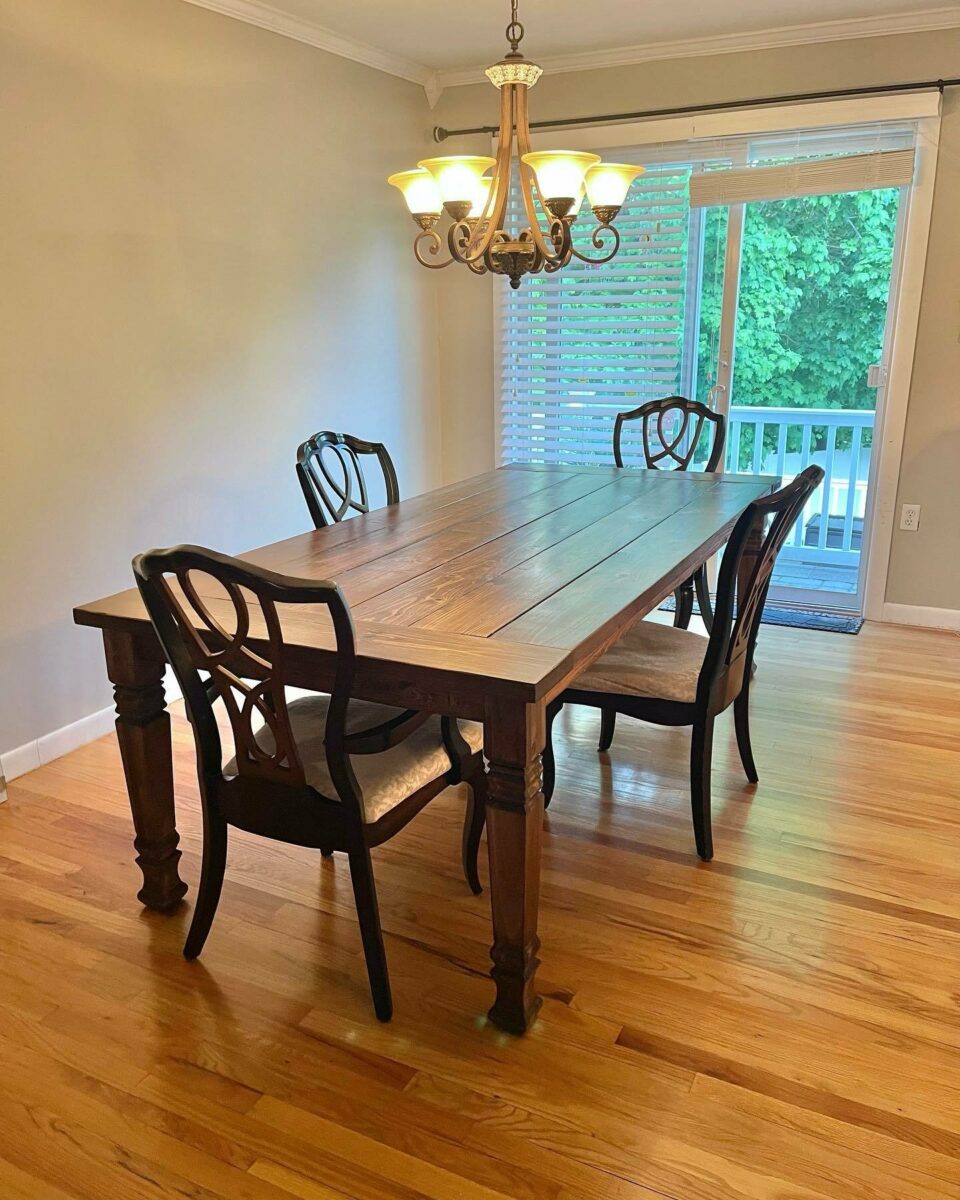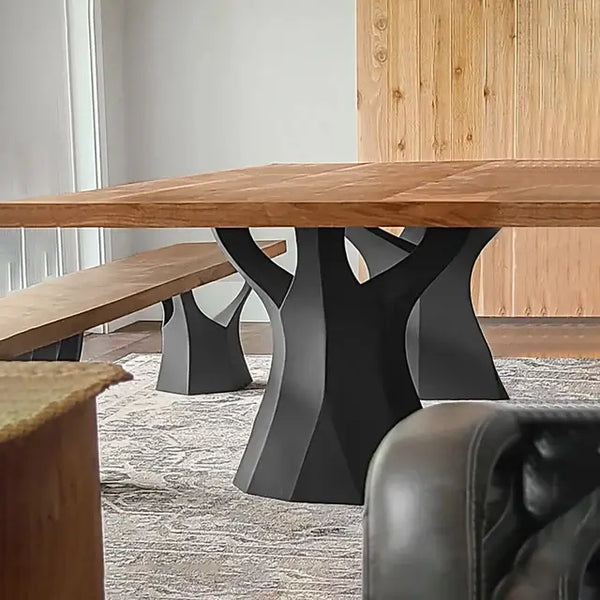Simple Steps to Replacing Old Dining Room Table Legs with New Ones
Expert Tips for Putting Up Dining-room Table Legs for Maximum Stability
When it comes to mounting eating room table legs, achieving optimum stability is paramount for both capability and looks. The process starts with selecting the right products and equipment, followed by meticulous placement and consideration of weight distribution. Each action plays an essential function in ensuring that the ended up product holds up against daily usage without jeopardizing safety and security or style integrity. Comprehending the subtleties of these aspects can dramatically influence the total outcome. What certain techniques can improve security even additionally?
Pick the Right Legs
When selecting the ideal legs for your dining space table, it is vital to take into consideration both functionality and appearances. The legs you choose will substantially influence the overall design and stability of the table. Review the table's planned use; if you anticipate constant celebrations, tougher legs, such as those made from strong timber or metal, may be much more appropriate, as they supply raised durability and support.
Next, consider the elevation and design of the legs in relationship to the table top. Common table normally vary from 28 to 30 inches in height, so guarantee the legs align with this standard for convenience. The design of the legs ought to match the layout of the table top-- whether it be modern, rustic, or standard. Conical legs can add a contemporary touch, while turned legs may convey an extra timeless aesthetic.

Select Appropriate Hardware
Just how can the best equipment enhance the stability and durability of your dining-room table? The choice of appropriate hardware is essential to guaranteeing that the legs of your table are firmly affixed and able to endure routine usage. High-quality screws, bolts, and braces give the necessary strength to support the weight of the table, in addition to any kind of added loads placed upon it during meals or events.
When picking screws, select those made from resilient materials such as stainless-steel or brass, which resist corrosion and maintain stability gradually. The length of the screws is similarly crucial; they need to pass through deeply right into the table's framework without endangering honesty. For bolted links, take into consideration making use of lock washing machines to prevent loosening up as a result of resonance or activity.
Additionally, using edge braces can add added support, especially for bigger tables or those with larger tops. These brackets disperse weight equally and aid preserve the table's shape. Ensuring that the equipment you choose is suitable for the certain products of your table will further boost its general stability and long life, enabling you to appreciate your eating experience for many years to come.
Ensure Correct Positioning
Proper placement of dining-room table legs is crucial for both visual appeal and useful stability. Misaligned legs can result in an irregular tabletop, which might not only be aesthetically unappealing yet also endanger the table's usability. To attain ideal placement, begin by gauging the distance from the table's edges to the leg attachment points. This makes certain that each leg is positioned equidistant from the sides, creating a balanced appearance.
Use a degree during setup to validate that each leg is vertical to the tabletop. This step is critical, as even minor disparities can rise into considerable security concerns in time. It is a good idea to note the wanted leg positions on the underside of the table with a pencil or covering up tape prior to safeguarding them. This practice functions as a visual guide, permitting changes as needed.
In addition, double-check the alignment after the initial screws are tightened, as adjustments might be essential prior to totally safeguarding the equipment. By focusing on appropriate positioning, you not only enhance the table's overall layout yet additionally make sure that it stays secure and practical for years to come.

Consider Weight Circulation
After making certain appropriate positioning of the dining area table legs, it is very important to think about weight distribution to boost security and functionality. dining room table legs. Proper weight circulation is important in preventing guaranteeing and tottering that the table can support its intended tons without risk of tipping or falling down
When positioning the legs, guarantee they are placed at equivalent distances from the facility of the table to uniformly disperse the weight throughout the framework. Think about the weight of the table top and any type of items that will regularly rest on it, such as attractive pieces or tabletop devices. Tables with larger surfaces must read ideally have legs positioned closer to the edges, as this takes full advantage of the base of support and decreases the danger of instability.
In addition, if the table is intended for use in a high-traffic location, consider utilizing larger materials for the legs or including maintaining elements, such as cross-bracing or a reduced rack - dining room table legs. These adjustments can help keep balance and stop moving during usage. Eventually, a well-considered weight distribution technique will substantially enhance the table's total performance, ensuring it stays a attractive and practical focal point for your eating space
Test Stability Before Usage
Examining the stability of the dining-room table before usage is an important action that needs to not be overlooked. Guaranteeing that the table is secure and safe and secure can protect against accidents and prolong the lifespan of the furniture. Begin by applying gentle pressure to various points on the table surface. Lower on the center and afterwards along the edges, observing any news wobbling or shifting. If the table shows instability, identify the legs or joints that may call for change.
Following, examine that all screws and fasteners are tightened properly. Loosened links can cause instability and prospective damage over time. If essential, make use of wood glue on joints to boost security, making sure to allow adequate drying out time.

Conclusion
Finally, the installment of dining-room table legs requires cautious factor to consider of materials, weight, positioning, and equipment circulation to attain maximum stability. By choosing high-quality fasteners and strong legs, ensuring accurate positioning, and dispersing additional hints weight equally, the architectural integrity of the table can be considerably improved. Carrying out a security examination before normal usage further guarantees that the table will stand up to daily stress, thus offering a secure and reliable dining experience.
When it comes to installing eating area table legs, attaining optimum security is extremely important for both capability and visual appeals. The legs you choose will considerably affect the general design and stability of the table (dining room table legs). Standard dining tables typically vary from 28 to 30 inches in elevation, so make sure the legs line up with this requirement for comfort.Correct placement of eating room table legs is important for both aesthetic allure and useful stability.In conclusion, the installation of eating space table legs requires careful factor to consider of products, equipment, weight, and alignment distribution to attain maximum stability